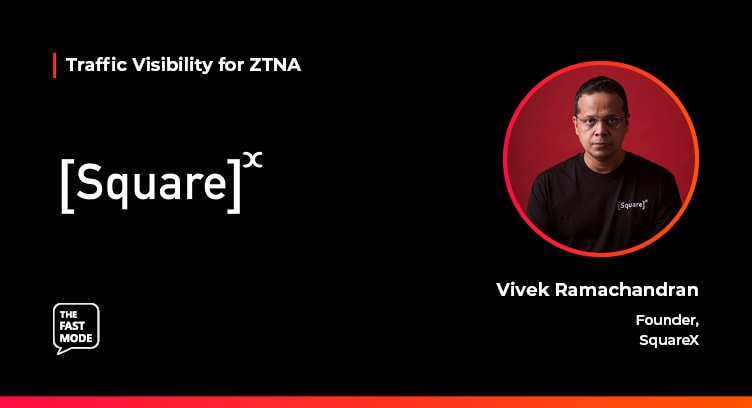The Fast Mode spoke to Vivek Ramachandran, founder of SquareX on the impact of traffic visibility on ZTNA networks. Vivek joins us in a series of discussions with leading cybersecurity and networking vendors, assessing the evolution of ZTNA technologies, the roadmap for ZTNA deployments, the benefits of ZTNA for enterprise and telco networks, and the need for real-time traffic visibility technologies such as DPI for ZTNA.
Ariana: What challenges do you see across ZTNA deployments?
Vivek: Since the onset of COVID-19, a substantial 40% of the workforce has transitioned to remote and hybrid work arrangements. Coinciding with this shift, the pandemic period has seen cyber attacks escalate by 238%. The traditional network perimeter has now extended to various endpoints—residences, coffee shops, and airports, underscoring the crucial role of endpoint security in the adoption of zero trust principles within modern networks. Presently, endpoint security remains compartmentalized with separate solutions for network, host, and browser security.
For a truly integrated zero trust endpoint solution, these distinct layers must establish zero trust boundaries among themselves. Currently, however, such integration is lacking, resulting in the prevalence of undetected cross-layer attacks at the endpoint level, such as DNS poisoning. Here, a security solution, even one founded on zero trust, may miss attacks due to limited visibility across network layers or within the browser, allowing threats to slip through that it should otherwise neutralize.
Ariana: What’s in store for ZTNA vendors in the next 10 years?
Vivek: In today's cybersecurity landscape, zero trust is effectively applied at the network's edge, establishing robust defenses at the perimeter. Yet, its full potential remains unrealized at the endpoint level, now considered the expanded frontier of network security. This is how vendors like SquareX (Learn More) are reimagining ZTNA for the next 10 years.
SquareX's unique approach integrates zero trust principles across network, host, and application layers, without relying on its own detection capabilities. By deploying an isolation solution at the endpoint, SquareX ensures safe interaction with potentially malicious files, reinforcing the principle to "never trust, always verify." SquareX's disposable browsers (Watch Demo) and file viewers secure users against all threats, irrespective of the perceived trustworthiness of a site or file. This is how SquareX aims to disrupt and redefine endpoint security with a deterministic model (Read More).
Vivek Ramachandran is a serial entrepreneur, author, and cyber security professional with over 2 decades of experience. He is currently the founder of SquareX, a browser- based cyber security solution for consumers, which recently received seed funding from Sequoia Capital Southeast Asia in May 2023. Prior to SquareX, Vivek was the founder and CEO of Pentester Academy. The company trained thousands of customers from government agencies, Fortune 500 companies and to enterprises from over 140 countries. Vivek successfully sold Pentester Academy to a US based education and training company called INE in 2021.
This interview is a part of The Fast Mode's Next-Gen DPI Traffic Visibility for ZTNA segment, featuring over 40 leading cybersecurity and networking solution providers and their views on the importance of traffic visibility for ZTNA. A research report on this topic will be published in January 2024 - for more information, visit here.



















